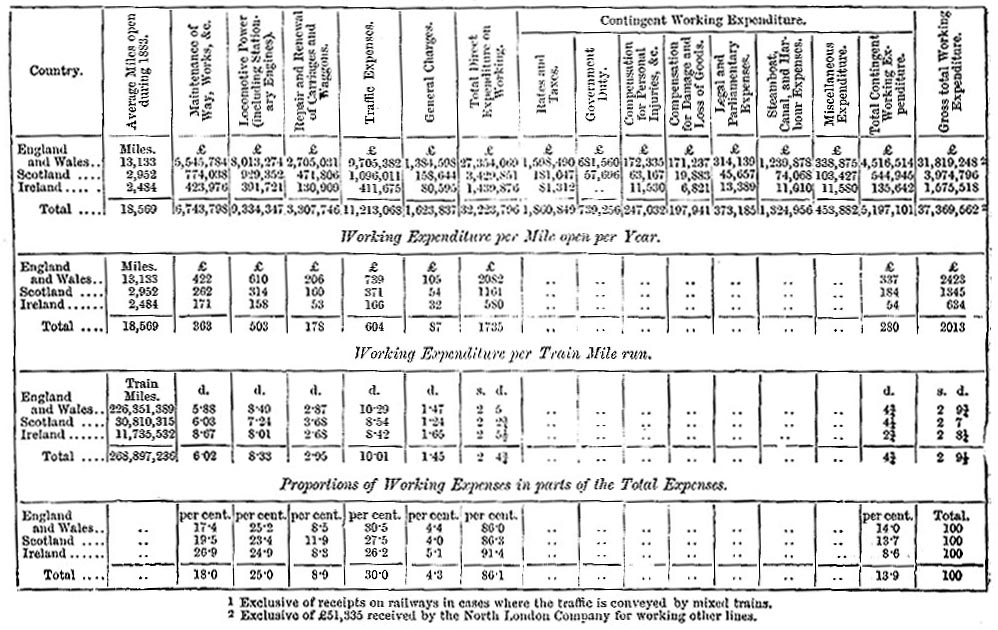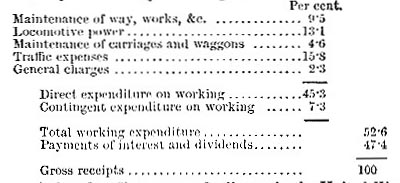B. RAILWAYS - STATISTICS (cont.)
[Railway Statistics] Receipts. Working Expenses.
Receipts
The whole of the receipts directly earned on the railways in 1883, with the miscellaneous receipts derived from rents, tools, navigation, steamboats, &c., are brought together in Table XVI. (see below). The receipts per train mile from passengers and from goods and mineral traffic are reckoned exclusive of the receipts on railways working mixed trains; but all the receipts per train mile for passengers and good together are divided by the total mileage run by all trains. In the last column the gross receipts, including miscellaneous receipts, are divided by the total train mileage.
Table XVI. Statistics of Receipts earned in 1883.

Of the total receipts for passengers and goods, goods brought 56.8 per cent. and passengers 43.2. In 1857 the proportions were nearly the same,—56 and 44 per cent. respectively. For the three kingdoms separately the percentages for 1883 were (Table XVII.):—
The average traffic receipts per mile open in 1883 were distributed between the three kingdoms as shown in Table XVIII.:—
These quantities for 1883 are proportionally for the three kingdoms as 4, 2 1/4,1. For the year 1857 the corresponding amounts were as 3, 2, 1, so that the growth of traffic in the interval has been greater in England than in Scotland, and greater in Scotland than in Ireland.
Working Expenses
Table XIX. (below) contains a summary of the expenditure of the railways of the United Kingdom for the year 1883, with the rate of expenditure of different kinds per mile open and per train mile run, and, in addition, the proportional expenditure of the different kinds in parts of the total working, expenditure.
Table XIX. Statistics of Expenditure for the United Kingdom for 1883.

The heads of expenditure are classified in this table in order to separate direct or really working expenditure from what may be called contingent or incidental expenditure not essential to the working of a railway, as rates, duty, compensation, &c. The direct or essential working expenditure is thus upwards of 32 millions sterling, or 86 per cent. of the whole expenditure. The amount and proportion of the net receipts are shown by deducting the total working expenditure from the total receipts, as under:—
The net receipts available for payment of dividend are equal to 4.29 per cent. on the paid-up capital, and they were disposed for 1883 in the following fashion:—
The total distribution, it appears, exceeded the available net receipts for the year by nearly £1,000,000. In explanation of the apparent discrepancy it may be stated that some companies had invested a portion of their capital in the stocks and shares of other companies; that interest is occasionally paid on the capital of companies whose lines are not open for traffic; and that interest on loan capital is not always paid out of net earnings. The appropriation of the gross receipts to working expenditure and dividends, according to the tabulated statement of expenditure, is summarily as follows, in parts of the gross receipts:—






